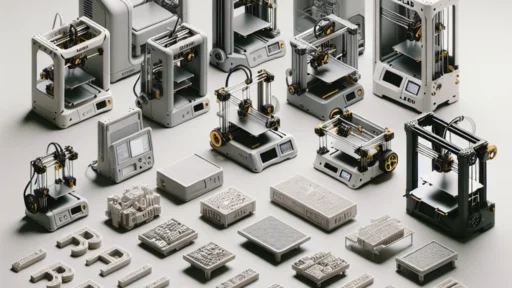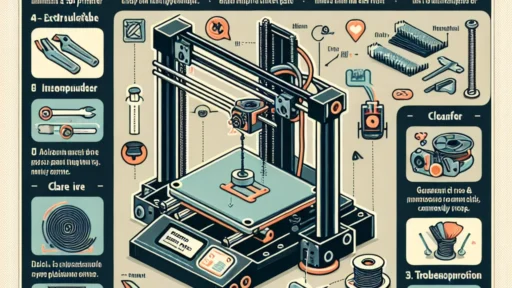Exploring the World of Specialty 3D Filaments: Beyond PLA and ABS
When it comes to 3D printing, many enthusiasts start their journey with PLA (Polylactic Acid) and ABS (Acrylonitrile Butadiene Styrene). These two materials are the bread and butter of basic 3D printing, loved for their ease of use and availability. However, as you dive deeper into the world of 3D printing, you’ll find a treasure trove of specialty filaments, each with its unique properties and applications. Let’s explore some of these exciting alternatives that can take your projects to the next level!
PETG: The Best of Both Worlds
One of the first materials you might want to consider is PETG (Polyethylene Terephthalate Glycol). PETG is a fantastic middle ground between PLA and ABS. It combines the easy printing of PLA with the strength and durability that ABS offers. If you’re looking for prints that require some flexibility and impact resistance, PETG could be your go-to filament. Plus, it’s food-safe (unless you use a non-food-safe color), which makes it great for kitchen gadgets.
Printing with PETG also has another major plus: it produces less odor than ABS and doesn’t warp as easily, making it a better choice for home printers. The clarity of PETG allows for beautiful, glossy prints, making it a favorite among those who want aesthetics along with functionality.
TPU: The Flexible Friend
If you need something that bends and stretches, look no further than TPU (Thermoplastic Polyurethane). This filament is known for its flexibility and durability, making it perfect for projects like phone cases, bracelets, and even customized shoe soles. The rubbery texture gives you the ability to create prints that are not only attractive but also functional, providing impact resistance while remaining lightweight.
One challenge with TPU is that it can be tricky to print with, requiring a printer that can handle flexible filaments. Your print settings may also need some tinkering to prevent jams. However, once you get the hang of it, you’ll unlock a whole new range of design possibilities.
Nylon: The Tough Performer
Nylon filaments are known for their incredible strength and toughness. If your project demands high durability and resistance to wear and tear, nylon could be your best bet. It’s also great for functional parts like gears, mechanical components, and tooling applications. However, nylon is hygroscopic, meaning it absorbs moisture from the air, which can affect print quality. Storing it properly in a dry box or using a vacuum-sealed bag is crucial for maintaining its integrity.
Nylon prints also have a smooth finish, making them aesthetically pleasing. However, you might need to invest more time into fine-tuning your printer settings since nylon can be finicky and requires high printing temperatures.
Wood and Bamboo Filaments: The Nature-Inspired Options
For those who love a natural aesthetic, wood and bamboo filaments add a unique charm to your prints. These filaments typically consist of a mixture of PLA and fine bits of wood or bamboo particles, allowing you to create prints that look and feel like wood. The result? Beautiful, organic-looking items that can be sanded, stained, or painted.
One fun aspect of wood filaments is the variety of finishes you can achieve. You can create everything from furniture to decorative items—and the smell during printing? Absolutely reminiscent of freshly cut wood! Just keep in mind that these filaments might clog your printer nozzle due to the wood fibers, so it’s essential to use a larger nozzle diameter.
Metal Filaments: For That Industrial Vibe
If you want your prints to carry a bit of weight physically and metaphorically, metal filaments like bronze, copper, or stainless steel filled options are worth checking out. These materials can give your prints an impressive metallic finish and a hefty feel that’s perfect for sculptures, jewelry, or even small functional items.
Keep in mind that printing with metal-filled filaments can wear down standard nozzles, so a hardened steel nozzle is often a must. The results are stunning, providing a unique look that adds an industrial touch to your projects.
The World Awaits
With the vast array of specialty filaments available, the only limit is your creativity. Whether you want to print something functional, artistic, or purely experimental, these materials can elevate your 3D printing game from the standard to something truly remarkable. There’s a whole universe to explore beyond the boundaries of PLA and ABS, offering you tools to create personalized, durable, and unique pieces.
So, whether you’re printing playful toys, serious mechanical parts, or artistic endeavors, don’t be afraid to venture into the world of specialty filaments. There’s always something new around the corner in the fantastic realm of 3D printing, just waiting for you to uncover its potential. Happy printing!






